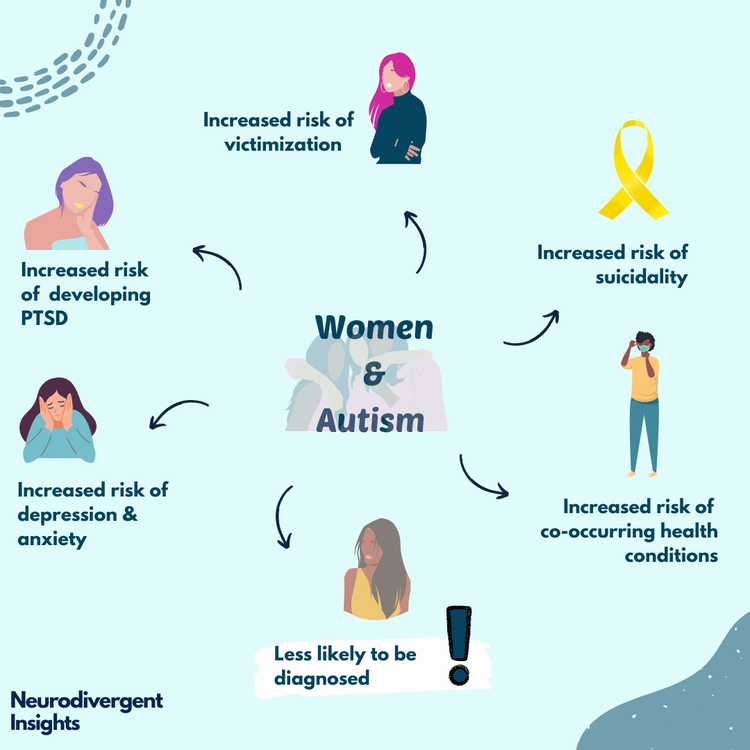The Role of Education And Learning in Sustaining Trainees with Autism: Best Practices
The Role of Education And Learning in Sustaining Trainees with Autism: Best Practices
Blog Article
Recognizing Autism: A Comprehensive Overview to Signs and signs
Autism Spectrum Condition (ASD) encompasses a wide array of attributes that can substantially impact an individual's social interactions and day-to-day performance. Recognizing these nuances not only aids caretakers and educators in providing appropriate assistance yet likewise cultivates a much more comprehensive setting for individuals with ASD.
Overview of Autism Range Condition
Specifying Autism Range Condition (ASD) entails identifying it as an intricate neurodevelopmental condition defined by a series of obstacles in social communication, interaction, and behavioral patterns. The term "spectrum" mirrors the large variability in signs and their severity, which can differ substantially from one person to another. ASD normally materializes in early childhood years, although some people might not get a diagnosis until later in life.
Factors influencing the advancement of ASD consist of ecological variables and genetic predispositions, although the exact causes remain under investigation. Diagnosis commonly counts on behavioral assessments, as there are no definitive clinical tests for ASD. Early treatment is critical and can dramatically boost end results, focusing on improving interaction skills, social interactions, and flexible habits.
Individuals with ASD might also exhibit one-of-a-kind strengths, such as remarkable focus to detail or particular areas of expertise. Comprehending the complex nature of ASD is vital for fostering a comprehensive atmosphere that fits neurodiversity. Proceeded research study is vital for creating reliable treatments and support group, making it possible for people with ASD to thrive and accomplish their prospective within culture.
Typical Indicators of Autism
Acknowledging the common signs of Autism Range Problem (ASD) is important for early identification and intervention. These indications can differ widely in severity and discussion, yet certain features are frequently observed in individuals with ASD.
One of the most prevalent indicators is a marked trouble in developing and preserving eye contact. Individuals may likewise exhibit restricted interest in social communications and reveal a choice for singular play.
Sensory level of sensitivities are also usual; individuals may underreact or panic to sensory stimuli, such as textures, lights, or noises. autism. Language development can be atypical, with some kids exhibiting postponed speech or making use of language in uncommon ways, including echolalia-- repeating sentences or expressions heard in other places
It is important to keep in mind that not every person with ASD will show all these signs, and the level of these actions can vary substantially. Early recognition permits prompt assistance and resources, boosting the lifestyle for those on the spectrum.
Social Communication Obstacles
Social communication obstacles are a hallmark of Autism Range Disorder (ASD), affecting an individual's ability to engage successfully with others. These difficulties can manifest in numerous ways, consisting of obstacles in initiating and preserving conversations, see this page recognizing social signs, and responding properly in social interactions.
Individuals with ASD might battle with nonverbal communication, such as eye contact, face expressions, and body More Bonuses language. This can cause misconceptions, as their communicative intent may not be properly analyzed by others. In addition, they might locate it challenging to realize the nuances of tone and context, which are essential for effective interaction.
In group settings, individuals with ASD may really feel overloaded and might not understand exactly how to join in conversations (autism). They might likewise display irregular conversational patterns, such as monologuing concerning details passions without recognizing social reciprocity
In addition, these obstacles can lead to social seclusion or difficulties in developing partnerships, as peers might misunderstand their actions or interaction design. Recognizing these social communication difficulties is critical for promoting helpful atmospheres that promote social abilities development and improve the top quality of communications for individuals on the autism range.
Sensory Level Of Sensitivities and Actions
Several people with Autism Range Problem (ASD) experience heightened sensory level of sensitivities that can considerably impact their day-to-day lives. A person with ASD may discover day-to-day noises, such as a vacuum cleanser or crowded atmospheres, overwhelmingly distressing, leading to stress and anxiety or meltdowns.
Sensory processing differences in individuals with ASD can also affect their capacity to engage in routine activities and social communications. As an example, a child who is delicate to touch might withstand physical love or stay clear of specific clothing fabrics. A preference for certain textures or tastes can restrict dietary options and produce challenges during nourishments.
Recognizing these sensory level of sensitivities is essential for acknowledging the distinct experiences of people with ASD. Understanding of their sensory profiles can cultivate much better interaction and assistance techniques, creating an atmosphere that suits their demands and boosts their lifestyle. Inevitably, acknowledging sensory sensitivities is a critical component of understanding the broader range of autism.

Sustaining People With Autism
Efficient assistance for people with Autism Spectrum Condition (ASD) is crucial for improving their overall wellness and fostering self-reliance. Assistance strategies should be tailored to fulfill the distinct demands of each individual, considering their staminas and obstacles.

Social abilities training can additionally play an essential function. autism. Engaging people in group tasks or role-playing situations can boost their ability to navigate social communications. In addition, it is important to enlighten household participants, caregivers, and peers concerning ASD to promote a comprehensive and helpful community
Final Thought
By promoting improved communication and social skills, individuals with autism can browse their atmospheres extra efficiently. Eventually, raised understanding and support can significantly boost the high quality of life for those affected by ASD.
Autism Range Disorder (ASD) incorporates a large range of features that can dramatically influence an individual's social communications and day-to-day performance.People with ASD may have a hard time with nonverbal interaction, such as eye get in touch with, face expressions, and body language.Lots of people with Autism Range Disorder (ASD) experience heightened sensory sensitivities that can dramatically influence their everyday lives.Sensory processing distinctions in individuals with ASD can also impact their capacity to engage in social interactions and routine activities.Comprehending these sensory sensitivities is essential for recognizing the unique experiences of individuals with ASD.
Report this page